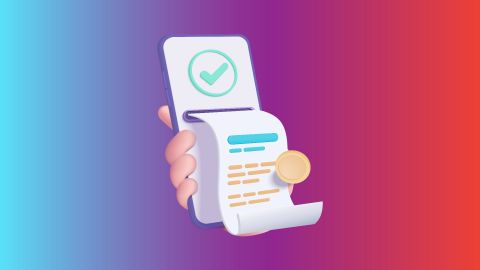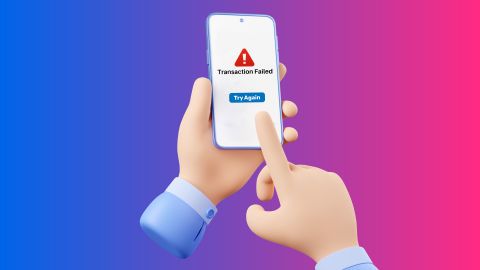What is a CVV number on a debit card?
CVV, which stands for Card Verification Value, is a 3 or 4-digit code located on the back of a debit card. It is a crucial element for completing various online transactions and should be kept confidential to safeguard the card from unauthorised use or fraud. The CVV number, also known as the CSC or Card Security Number, is embossed on the card and should not be shared with anyone.
What are the components of a CVV in a debit card?
The components of a CVV in a debit card consist of two parts:
The first part of the CVV number on a debit card is concealed within a magnetic strip, which contains unique and vital information about the debit card. The second part of the debit card is comprised of three or four-digit codes that must be entered to finalize an online transaction.
The CVV number is generated by the bank and is based on various details such as the debit card number, expiry date, service code, and issuer's unique code. Some debit cards may feature a four-digit CVV number instead of the standard three-digit code. It is essential to note that the CVV number is distinct from the debit card PIN and is printed on the backside of the card.
Types of CVV
There are two main types of CVV codes used on debit cards:
CVV1: This type of CVV is embedded in the magnetic strip of your debit card. It is not visible to you but is read automatically when you swipe your card at a point-of-sale (POS) terminal. CVV1 helps verify the authenticity of the card during in-person transactions.
CVV2: This is the three or four-digit code printed on the back of your debit card, usually near the signature strip. For some cards, like American Express, it is a four-digit code printed on the front. CVV2 is primarily used for online and over-the-phone transactions to ensure that the person making the purchase has the physical card in their possession.
Understanding these types of CVV codes can help you better protect your card information and reduce the risk of fraudulent transactions.
What is the importance of a CVV number in a debit card?
The CVV number serves as an additional security feature, safeguarding the user's data during online transactions. Its presence verifies that the individual processing the online transaction possesses a physical debit card. The CVV number is secure as online payment portals are prohibited from saving it, requiring users to enter it each time they make a payment, even if their debit card information is stored on the portal.
Where to find the CVV code in a debit card?
The CVV code, a security feature for online transactions, is usually printed on the back of your debit card. Look for a 3-digit number (for Visa, MasterCard, RuPay, Discover) near the signature panel, separate from your card number. For American Express cards, the 4-digit CVV code is on the front of the card, next to the card number.
What does the CVV in the debit card reveal?
The CVV code does not directly reveal any sensitive information like your PIN or account number. It is a unique identifier for your specific card and helps verify you have the physical card when making online purchases. It adds an extra layer of security to prevent unauthorised transactions.
Is it safe to share your CVV
No, it is not safe to share your CVV. The CVV (Card Verification Value) is a security feature designed to protect your card from unauthorised use, especially during online transactions. Sharing your CVV can expose you to potential fraud and unauthorised transactions. Always keep your CVV private and only enter it on secure, reputable websites.
How does CVV protect you from frauds
The CVV adds an extra layer of security to your debit card transactions. It ensures that the person making the transaction has the physical card in their possession. This is particularly important for card-not-present transactions, such as online or over-the-phone purchases. By requiring the CVV, merchants can verify that the cardholder is indeed the one making the purchase, reducing the risk of fraud.
How can you protect your CVV?
To protect your CVV and prevent fraud, follow these tips:
- Do not share your CVV: Never share your CVV with anyone, even if they claim to be from your bank.
- Use secure websites: Only enter your CVV on secure websites with HTTPS encryption.
- Monitor your accounts: Regularly check your bank statements for any unauthorised transactions.
- Avoid public Wi-Fi: Do not enter your CVV when connected to public Wi-Fi networks.
- Use virtual cards: Consider using virtual credit cards for online transactions to add an extra layer of security.
Dos and don'ts while using CVV number
Dos:
- Memorise your CVV: Try to memorise your CVV instead of writing it down.
- Use secure websites: Always ensure the website is secure (look for HTTPS) before entering your CVV.
- Monitor transactions: Keep an eye on your bank statements and set up alerts for any suspicious activity.
- Report suspicious activity: Immediately report any unauthorised transactions to your bank.
Don'ts:
- Don't share your CVV: Never share your CVV with anyone, even if they claim to be from your bank.
- Don't enter CVV on unsecure sites: Avoid entering your CVV on websites that do not have proper security measures.
- Don't use public Wi-Fi: Avoid entering your CVV when connected to public Wi-Fi networks.
- Don't write down your CVV: Do not write down your CVV or store it in easily accessible places.
Conclusion
In conclusion, the CVV code, a vital security feature for online debit card transactions, acts as an extra layer of protection against fraud. It verifies you have the physical card and is not directly linked to sensitive information like your PIN. Remember, never share your CVV with anyone, and authorised payment platforms would not store it after a transaction. By understanding and using the CVV code correctly, you can enjoy secure online shopping experiences.
Also check
| Transfer Money Using Debit Card |
| How To Unblock ATM Card |
| How Debit Card EMI Works |




